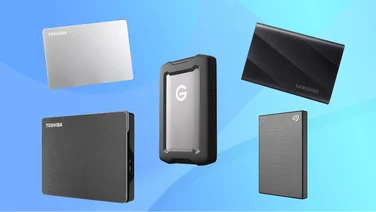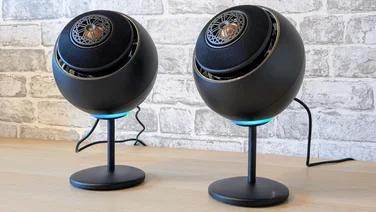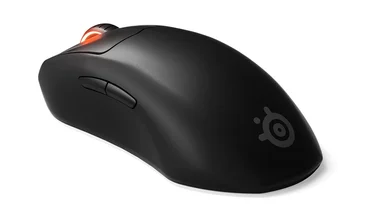To help us provide you with free impartial advice, we may earn a commission if you buy through links on our site. Learn more













- Uncompressed video quality
- 1080p streaming at 60fps
- Excellent software control
- Expensive
- No microphone
Best known for its streamer-centric lighting, microphones and capture devices, the Facecam is Elgato’s first foray into the premium webcam market. With a clear focus on image quality and a keen understanding of what makes streamers tick, the Facecam is positioned as a one-stop camera solution for enthusiast-level Twitch broadcasters.
Despite coming up against high-priced competition from the likes of Razer and Logitech, the Facecam stands a decent chance of becoming a popular choice among quality-conscious streamers. With an uncompressed video output and a bevy of customisation options in the companion app, Elgato’s Facecam might just succeed.
READ NEXT: Best webcam
Elgato Facecam review: What do you get for the money?
Clocking in at £190, the Facecam sits comfortably between Elgato’s EpocCam iOS app, which turns your iPhone into a streaming device, and its higher-end Cam Link camera interfaces. While Cam Link 4K technically comes in cheaper at around £120, it does require you to already have a DSLR at your disposal.
Rather than create a jack-of-all-trades webcam, Elgato has gone all in on streaming image quality with the Facecam. Consequently, the resolution is capped at a Twitch-friendly 1080p, with a fixed focus and no on-board microphone. What it does offer, however, is uncompressed video at 1080p resolution at 60fps, with companion software that provides DSLR-level control over your camera settings.













Measuring 79 x 48 x 58mm without the included stand, the camera is a fairly substantial matte black unit, although at 96g it still balances nicely on a laptop display. The lens is an all-glass f/2.4 optic with a full-frame equivalent 24mm focal length that offers a relatively wide 83-degree field of view. The lens sits slightly recessed, too, in a bid to avoid lens flare, and there’s a blue status light situated on the left, with a physical lens cap privacy cover for when it’s not in use.
The rear of the camera connects via USB-C, and a lengthy 2m USB-C to USB-A cable is supplied in the box. Elgato specifies that the Facecam needs a direct connection to a USB 3.0 port or faster. The base has a 1/4in thread for use with Elgato’s Multi-Mount system or any standard tripod, although a rubber-gripped, tiltable monitor mount is included.













Internally, the Facecam is built around a Sony STARVIS CMOS sensor. Originally designed for security camera applications, this back-illuminated sensor should provide plenty of detail even in low-light conditions.
As previously mentioned, Facecam’s headline spec is its uncompressed video feed. As standard, the camera outputs at 1080p 60fps, but this can also be configured for 1080p30, 720p60, 720p30, 540p60 and 540p30 via the Camera Hub app.
Elgato Facecam review: What’s the video quality like?
With such an emphasis on video quality I had high expectations for Facecam, and fortunately, I wasn’t left disappointed.
Image quality is frankly rather excellent. Despite missing out on HDR, there’s still plenty of dynamic range on offer, while contrast, colour and saturation all look pleasingly natural. As I’ll get to later, there’s plenty of adjustability on offer in the Camera Hub app, too.













While there’s no autofocus to speak of, the fixed focus keeps everything from a distance between 30cm and 120cm nice and sharp, while the 83-degree viewing angle provides chest to torso framing even at close quarters.
While it may not technically resolve the fine detail of a 4K webcam, the uncompressed artefact-free feed, in combination with solid noise handling, means that the quality difference isn’t as stark as you might think. Textures on clothing and hair are all clearly defined, and the image holds up even when the lighting conditions are far from optimal. Running at 60 frames per second, motion is silky smooth, too.
However, there is a debate to be had as to how much you’ll benefit from the uncompressed feed by the time it’s been processed by Twitch, YouTube, Discord or Zoom. It’s also worth bearing in mind that the chunkier data stream is going to be more taxing on your system and network bandwidth.
Other than needing direct access to a USB 3 port or faster, Elgato hasn’t published any minimum spec requirements but has acknowledged that it will benefit from a faster system. Regardless, Facecam removes at least one round of compression from your feed and should provide your streaming host of choice with a cleaner source from which to work.













Usually, this is the part where I’d get into the camera’s audio chops, but as mentioned earlier, Elgato has left out the microphone entirely. Honestly, I’m with them, since if you’re serious enough about your streaming to drop the best part of £200 on a webcam then it’s a pretty safe bet you’ve already got a more appropriate USB mic or headset. However, this omission still has the potential to stump more casual users.
Elgato Facecam review: Software
While the camera can be used on its own, like most premium webcams you’ll get the most from it if you pair the Facecam with its companion app.
Elgato’s Camera Hub software brings DSLR-like fine-tuning to the Facecam. For casual video calls, this level of granularity is perhaps overkill and so there’s always the option to leave everything set to auto. For serious broadcasters, however, Camera Hub allows you to dial in all sorts of streaming-specific settings.













You’ll find sliders for contrast, saturation and sharpening, along with a zoom function and the option to manually adjust the colour temperature to best match your ambient lighting. You can zoom in all the way from the default wide-angle 83 degrees to a tight 25 degrees, although this is a digital crop and it will noticeably degrade your image quality when pushed to the extreme.
Like on a DSLR camera, you can also switch between centre-weighted and average exposure metering modes, depending on your environment, and adjust exposure compensation as well. Should you want to take full control, there’s also the option to manually set the shutter speed and, uniquely, adjust the ISO. The ISO read-out is a particularly useful addition as it lets you know how well lit your scene is, allowing you to adjust your lighting as necessary to lower the ISO and limit visual noise.













Another interesting addition is the inclusion of onboard memory. Once you’ve dialled in your ideal camera settings, you’re able to store your adjustments on the camera itself. Storage capacity is decidedly limited: you can only store one set of settings at a time and this overwrites the factory default. It is, however, still a handy feature, as it allows you to recall your settings even if you’ve reinstalled the app or hopped over to a different machine.
Elgato Facecam review: Are there any good alternatives?
At just shy of £200, the Facecam has some stiff competition. The £200 Razer Kiyo Pro is an attractive alternative, offering HDR support at 1080p30 along with a built-in microphone. For around the same price you may also want to consider the Logitech Brio, which offers up to 4K resolution along with HDR streaming at 1080p.
Elgato Facecam review: Verdict
With high-quality uncompressed video and true granular control via the Camera Hub software, Elgato has made an excellent debut into the premium webcam market with the Facecam.
The camera is unapologetically aimed specifically at Twitch streamers and so casual users will likely find more well-rounded and better-value options elsewhere. For quality-conscious streamers that are specifically looking for a decent middle ground between a standard webcam and a full-blown DSLR setup, however, the Facecam is a solid competitor.







